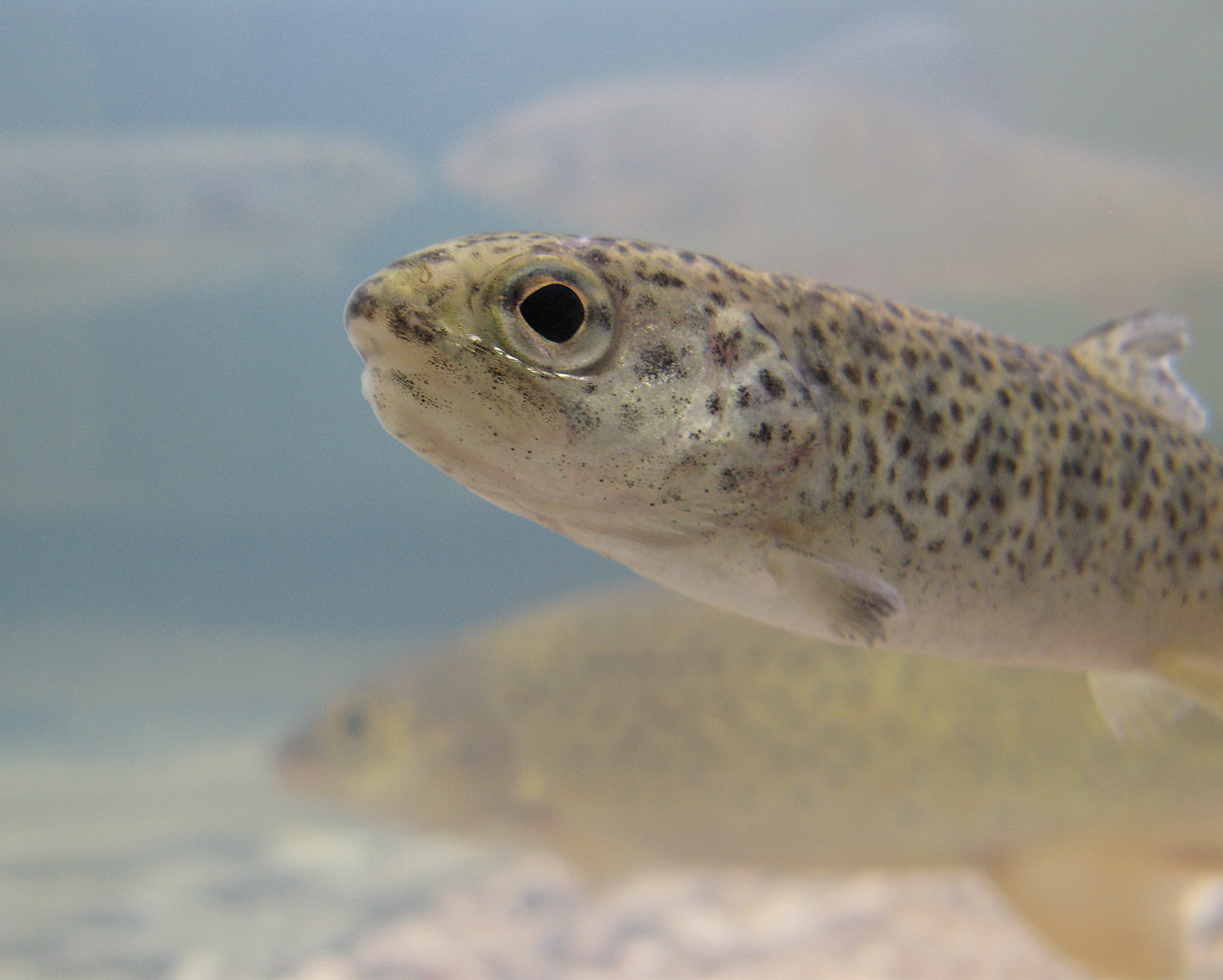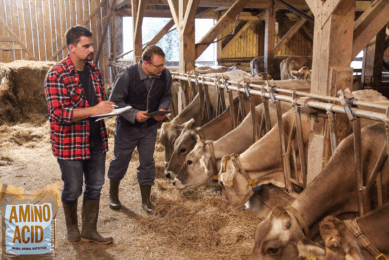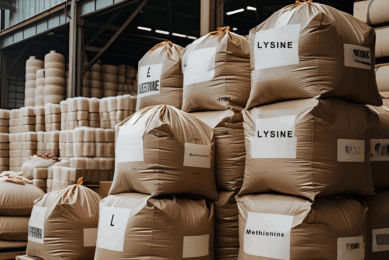Rapeseed shows high nutritional value for fish

Fish meal is becoming a limited resource for aquafeed but rapeseed proteins can be a good ?alternative. German researchers have put a rapeseed protein concentrate (RPC) to the test.
By Dr Halime Idakiev, Pilot Pflanzenöltechnologie Magdeburg e.V., Germany
Fish meal, which is the protein source traditionally used in aquaculture diets, production is declining because of overfishing. The worldwide supply of fish meal (annual production volume 5–7 million tons) will be not able to cover the needs of the expected future expansion of global aquaculture. Therefore aquaculture is looking for alternative suitable protein sources, which could replace this limited resource. A useful protein source from the by-products of rapeseed oil production, cake or meal, has been suggested as an alternative to fishmeal for aquafeed use. They have relatively high protein content, which is distinguished by a well-balanced amino-acid composition and a high biological value. Researchers from the German non-profit research institute ‘Pilot Pflanzenöltechnologie Magdeburg’ (PPM) produced a rapeseed protein concentrate (RPC) of high quality, able to ensure a full replacement of fish meal protein. PPM runs Germany’s first and unique experimental pilot plant, designed to recover and process vegetable oils and proteins. To make the RPC, the researchers used rapeseed (Brassica napus) of variety “Lorenz”, provided by Norddeutsche Pflanzenzucht (NPZ). To turn the rapeseeds into the RPC, several processing steps were done. Figure 1 represents a process flow sheet of the small pilot scale processing procedures used to produce the RPC.
Aiming for a high PDI
When a rapeseed protein product is used in aquaculture, it should have favourable nutritional properties for fish. Moreover, the starting material for the RPC production (rapeseed meal) should be suitable for protein extraction. Very important is that the rapeseed meal has a protein solubility as high as possible, measured as PDI (Protein Dispersibility Index).
The PDI can be affected by processing, high operating temperatures and long operating times as a result of the denaturation of proteins and thus considerable decrease in the protein solubility. This denaturation process makes it significantly more difficult to extract the proteins from the meal. As a result, the extraction of proteins from rapeseed meal produced in the industrial oil mills is indeed possible, but only in low yield with reduced nutritional properties mainly due to the heat-intensive desolventising/toasting.
Furthermore, a reduction of protein digestibility and amino acid availability also occurs during the desolventizing/toasting. Figure 2 shows the PDI of meal treated in the newly developed ‘fluidized bed desolventiser’ in comparison to other by-products of commercial rapeseed processing. The innovative gentle meal processing by using a fluidised bed desolventiser improves the meal quality and so increases three times the PDI taking values from 27.6 to 81.0. Since the PDI measuring method is developed for soy, therefore PPM developed one for rapeseed. The presented PDI are determined in accordance to the PPM method. The two major storage proteins in rapeseed are the low molecular protein napin (2S albumin) with a molecular weight of 12–17 kDa and the high molecular protein cruciferin (12S globulin) with a molecular weight of about 300 kDa.
Excellent amino acid profile
To characterise the nutritive value of the RPC obtained by the developed production method, its proximate composition and amino acid profiles as well as the concentration of anti-nutritional factors were determined. These results are given in the Table 1. By extraction of proteins from the meal the nutrient content of the final product was significantly improved. The protein extraction with a saline and alkali solution dialysing with an UF-apparatus resulted in a protein content of less than 70%. Therefore, the target protein content (this of the fish meal) was reached. The contents of fibre and other carbohydrates (calculated as nitrogen-free extract NfE) were preferably decreased compared to the rapeseed meal. However, the NfE content is still high by contrast with the fish meal.
A much higher NfE content such as this of the rapeseed meal can negatively influence protein digestibility in carnivorous fish. The calculated gross energy of RPC was similar to the fish meal. To make a better statement about the nutritional quality of the produced protein product, its amino acid composition was investigated. There is little difference in amino acid profile between starting rapeseed meal and RPC (Table 1).
According to the Table 1 the RPC is an excellent source of all essential amino acids. They have amino acid levels equal to (by methionine) or greater than fishmeal.
Anti-nutritional factors
The quality of the rapeseed protein product is determined to a large extent also by the content of anti-nutritional substances. The reduction of the anti-nutritional factors (ANF) provides a successful replacement of fishmeal. As shown in the Table 1, the produced RPC has reduced content of ANF due to the ethanolic treatment of the rapeseed meal. The lowering of the glucosinolate, phytic acid and sinapic acid level is also associated with the ultra-/diafiltration step as the toxic compounds have significantly lower molecular weights than rapeseed proteins.
Known values in literature on maximum allowable content of glucosinolate and phytic acid levels are from 1–4.4 μmol/g feed and 0.5–1 g/100 g feed, respectively, depending on the fish species and growth stage. Therefore, the contents of ANF in RPC are much less than the maximum allowable value concerning that the RPC makes only about 25–50% of the feed depending on fish species by replacement level of 100%.
Only for sinapic acid no literature data were reported. However, the values detected in the RPC are minimal compared to the de-oiled meal (before the ethanolic extraction) with content of 15.2 g/kg sinapic acid and sinapic acid ester (SAE), 1.09 g/kg sinapic acid (SA), 9.03 g/kg sinapin (SIN) and 2.21 g/kg sinapoylglucose (SG).In view of solubility of these compounds in aqueous solution it suggests that the ethanolic extraction was able to remove the sinapic acid and its ester.
To summarise it can be said that from the nutritional point of view RPC can be compared with fish meal protein.
Rapeseed put to the test
The produced RPC was evaluated as fish meal replacement in diets for juvenile rainbow trout (Oncorhinchus mykiss), juvenile turbot (Psetta maxima), juvenile common carp (Cyprinus carpio L.) and juvenile wels catfish (Silurus glanis L.). Experimental results from the conducted feeding trials demonstrate an enormous potential of RPC as protein source in aquafeeds. In the growth trial with rainbow trout 100% of dietary fish meal was successfully replaced with RPC. Thirty three percent of fish meal protein from a control diet could be substituted by RPC in diets of turbot and common carp without negative effects on feed efficiencies and fish growth. Wels catfish accepted substitution levels from 25%.
The reason of the reduced fish meal replacement level by these fish species appears to be the unfavourable diet taste resulting in reduced diet intake and growth performances. Despite lower glucosinolate content the typical mustard smell of glucosinolates was still noticeable in the feed. This smell clearly adverse affected diet acceptance by these fish species. Canola protein concentrate (CPC), which has been studied before by other researchers, shows slightly lower protein content (about 67%) and lower lysine and methionine and cysteine content, and completely no content of phytic acid relative to the RPC.
However, the glucosinolate content (3.4 μmol/g) was significantly higher toward our RPC, which causes a reduction of diet palatability resulting in reduced feed intake and growth rates when CPC completely replaces fish meal. The CPC could replace up to 75% of fish meal protein in diet of rainbow trout and 50% in diet of atlantic salmon without adversely affecting growth or feed efficiency. Therefore, a complete replacement of fish meal by the CPC produced by MCN process could not succeed. In contrast, our developed method provides a protein concentrate that successfully replaces 100% of fish meal in rainbow trout feeds.
Conclusions
The present study undertook investigations on the preparation of rapeseed proteins and developed manufacturing process of high quality rapeseed protein products, which can be used in fish nutrition. Protein extraction methods based on commercially available rapeseed meal would not be acceptable from an economic point of view. Therefore, technological processes for the production of RPC, by starting from the seed and utilising gentle meal processing and appropriate extraction procedure to get a protein product with high nutritive potential and high yield, were evaluated in this study. The investigated rapeseed protein preparation process provides a RPC with high nutritional value and low value of anti-nutritive factors. In regard to well-balanced amino acid composition, it is appropriate for aquaculture feeds, which makes it very attractive as an alternative protein source in aquafeed.
All feeding tests demonstrate the great potential of RPC as fish feed ingredient in the nutrition of the investigated fish species. The highest fish meal replacement level (up to 100%) was observed in the feeding trials with rainbow trout. Therefore, especially in the nutrition of rainbow trout, RPC was identified as an excellent fish meal alternative.
The achieved great results a completely replacement of fish meal by RPC obtained by the investigated production method, promise the best chance of its commercialisation.
This article has been edited from the original (open access) article: Rapeseed use in aquaculture, by Halime Nihat Adem, Ralf-Peter Tressel, Frank Pudel, Hanno Slawski, Carsten Schulz. Rapeseed use in aquaculture.
Published in OCL 2014, 21(1) D105.
References are available on request.
Article featured in AllAboutFeed volume 22 issue 5











